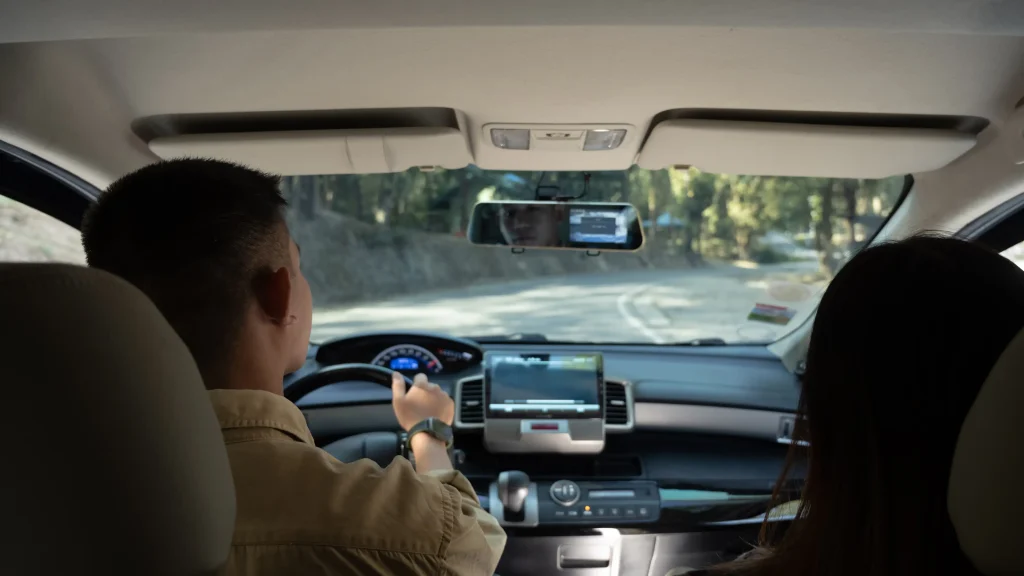The Silent Witness in Your Car: Event Data Recorders in Colorado Personal Injury Cases

When a car accident happens in Colorado, the immediate aftermath can be chaotic. Police reports are filed, insurance companies get involved, and each party often has a different recollection of the events. In the midst of this uncertainty, there might be a silent witness that holds the truth: the Event Data Recorder, or EDR.
Many modern vehicles are equipped with these sophisticated devices, often referred to as the “black box” of your car. While they aren’t as widely known as dash cams, EDRs play an increasingly significant role in understanding the moments leading up to a collision. For those involved in a Colorado personal injury case stemming from a car accident, understanding what an EDR is and the data it captures can help tell the most accurate story of the crash.
What Exactly is an Event Data Recorder?
Think of an EDR as a digital recorder designed to capture specific data points in the seconds before, during, and immediately after a significant vehicle event, such as a crash or a near-crash. It’s typically a small, non-volatile memory device integrated into the car’s airbag control module or the engine control unit.
Unlike a dash cam that continuously records video, an EDR primarily records electronic data. It’s triggered by a significant change in the vehicle’s dynamics, like a sudden deceleration or airbag deployment. Once triggered, it saves the data it has been continuously overwriting in a temporary buffer.
What Kind of Data Does an EDR Record?
The specific data points recorded can vary depending on the vehicle’s make, model, and year. However, some common types of information captured by EDRs include:
- Vehicle Speed: The speed of the vehicle at various points leading up to the event. This can be critical in determining if speeding was a factor.
- Braking Status: Whether the brakes were applied, and if so, the force and timing of the braking. This helps understand if the driver attempted to avoid the collision.
- Throttle Position: The percentage of the accelerator pedal being pressed. This can indicate if the driver was accelerating or decelerating.
- Steering Angle: The position of the steering wheel. This can provide insights into any evasive maneuvers attempted.
- Engine RPM: The revolutions per minute of the engine.
- Airbag Deployment: Whether the airbags deployed and, if so, which ones. This helps determine the severity of the impact.
- Seatbelt Status: Whether the driver and front passenger seatbelts were buckled.
- Delta-V (Change in Velocity): This measures the change in the vehicle’s speed during the impact, indicating the force of the collision.
- Yaw Rate: The rate at which the vehicle is turning.
- Lateral and Longitudinal Acceleration: The forces acting on the vehicle from the side and front/back.
- Pre-Crash Data: Often, EDRs record data for a short period before the trigger event, typically a few seconds. This “pre-crash” data is invaluable in reconstructing the sequence of events leading to the accident.
It’s important to note that EDRs generally do not record audio or video. Their primary function is to capture objective, measurable data related to the vehicle’s operation.
Why is EDR Data Important in a Colorado Personal Injury Case?
In the aftermath of a car accident, establishing fault (liability) is a legal determination for a personal injury claim. EDR data can provide objective evidence that can corroborate or contradict the accounts of the drivers involved and other witnesses. This data can be instrumental in:
- Determining the Cause of the Accident: By analyzing speed, braking, and steering data, it may become clear which driver’s actions contributed to the collision. For example, EDR data might reveal that one driver was speeding excessively or failed to brake in time.
- Establishing Negligence: To succeed in a personal injury claim, you need to prove that the other driver was negligent, meaning they failed to act with reasonable care, and this negligence caused your injuries. EDR data can provide strong evidence of negligent actions, such as aggressive driving or distracted driving (through the lack of braking or steering input).
- Reconstructing the Accident: Accident reconstruction experts can use EDR data, along with other evidence like police reports and physical damage, to create a detailed timeline and simulation of the crash. This can be presented in court to help a judge or jury understand what happened.
- Negotiating with Insurance Companies: Insurance companies often rely on police reports and initial assessments. However, EDR data can provide a more comprehensive and objective picture of the accident, potentially strengthening your negotiating position and leading to a fairer settlement.
- Addressing Disputed Facts: In many accidents, the involved parties have conflicting accounts of what occurred. EDR data can help resolve these disputes by providing an unbiased record of the vehicle’s behavior.
Accessing and Utilizing EDR Data in Colorado
While EDR data can be incredibly valuable, accessing it requires specific tools and expertise.
- Data Ownership and Privacy: In Colorado, as in many other states, the owner of the vehicle generally owns the data stored on its EDR. However, there are legal procedures for obtaining this data in the context of litigation.
- Preservation of Evidence: It’s important to act quickly to preserve EDR data. After an accident, vehicles may be moved or even totaled, potentially leading to the loss of this critical information. An attorney experienced in Colorado personal injury cases can take steps to ensure the vehicle is secured and the EDR data is preserved.
- Data Retrieval: Accessing EDR data typically requires specialized hardware and software. Trained professionals, such as law enforcement or accident reconstruction experts, are needed to download and interpret the data.
- Legal Process: Your Colorado personal injury attorney can guide you through the legal process of obtaining EDR data. This may involve sending spoliation letters to the other parties and their insurance companies, or even seeking court orders to compel the release of the data.
- Expert Analysis: Once the data is retrieved, it needs to be analyzed and interpreted by experts who understand the technical aspects of EDRs and accident reconstruction. They can translate the raw data into meaningful insights about the crash dynamics.
The Role of Your Personal Injury Attorney
Navigating the complexities of EDR data and its use in a personal injury claim can be challenging. This is where an experienced Colorado personal injury attorney at Hoffman Law Firm PC can provide invaluable assistance. We can:
- Advise you on the potential relevance of EDR data in your case.
- Take immediate steps to preserve the vehicle and its EDR data.
- Work with qualified experts to retrieve and analyze the EDR data.
- Integrate the EDR findings into your legal strategy.
- Use the EDR data to negotiate effectively with insurance companies or present a compelling case in court.
In the pursuit of justice after a car accident in Colorado, every piece of evidence matters. Event Data Recorders offer a unique and objective glimpse into the critical moments of a collision. While they may be a silent witness, the data they hold can speak volumes in establishing fault and securing the compensation you deserve for your injuries and losses.
If you have been injured in a car accident in Colorado, don’t overlook the potential significance of EDR data. Contact the experienced personal injury attorneys at Hoffman Law Firm PC today for a consultation. We are dedicated to thoroughly investigating your case and utilizing all available resources, including EDR analysis when appropriate, to fight for your rights and help you on the road to recovery. Let us help you uncover the truth behind your accident.
